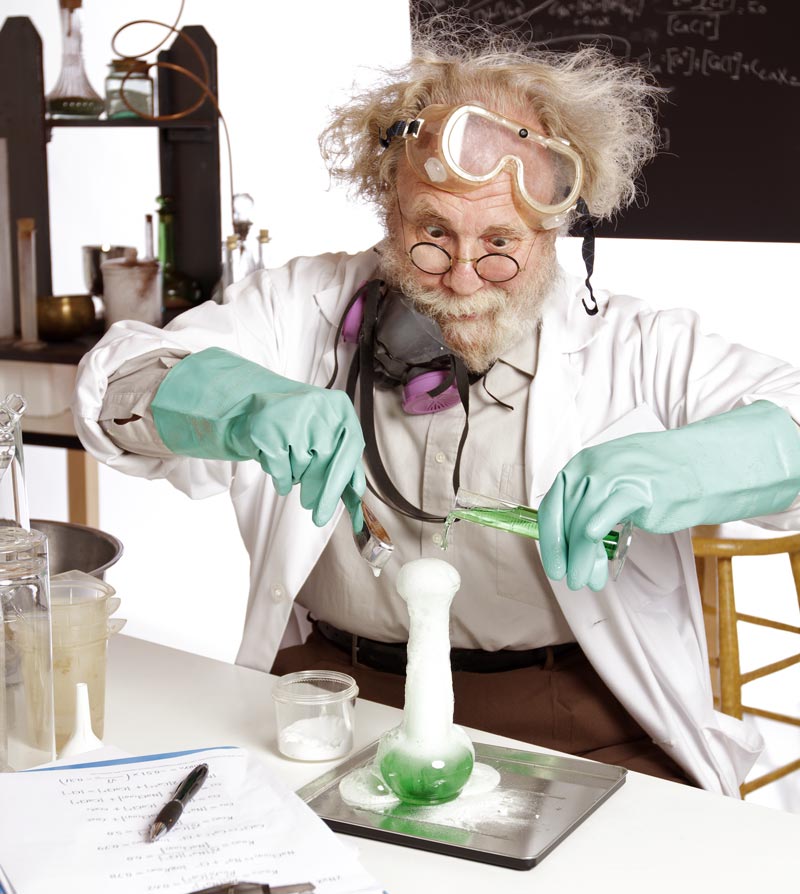10 Jul 2018
Nick Marsh discusses what he learned after sampling pathology for a few years and how his ignorance of this side of veterinary life, plus a dose of Quincy, M.E., inspired him to find out more.

Image © science photo / Adobe Stock
A few years ago, after spending a decade and a half in general practice and possibly inspired by watching a lot of Quincy, M.E. – when I was too young to know any better (incidentally, does anyone know how old we have to get before we do know better about things? I’d like to be prepared when the moment comes) – I became a resident in pathology.
Looking back at the fresh-faced youth I was 48 months ago, I’m slightly concerned about how little I knew about pathology at the time.
This probably says more about me than it does about any of you, but there are a couple of things I managed to remain blissfully unaware of in my time as a general practitioner, and, although it didn’t do me any harm, I found it interesting to learn.
And I thought you might, too.

In practice, when I telephoned the number at the bottom of my clinical reports, I was never entirely sure who the nice person was at the end of the line. Was he or she a pure scientist, technical expert or something else?
I definitely imagined them wearing a lab coat, and possibly sitting next to an excitingly, bubbly chemistry set. I had no idea what career choices they had made that led them to talk to me on the telephone, as grateful as I was for them doing it.
Well, it turns out veterinary pathologists are vets, too.
We’ve been there; we struggled through veterinary school and strained to see if our name was on the pass lists at the end of finals (although, I gather everyone gets notified by email nowadays, which makes more sense, though it seems less fun or terrifying). At least in the laboratory where I work the vast majority of pathologists have spent at least several years in practice. This is useful, because whatever difficult clinical, non-clinical or even emotional veterinary situation you are in when you telephone, the chances are we’ve been somewhere very similar.
It makes it a lot easier for us to help you or, failing that, sympathise with you. We understand why some patients are more challenging to retrieve samples from than others or why some clients are more impatient about your patients. Or how you can be inadvertently dropped in the “fertiliser” by a colleague who has gone on holiday to Trinidad for three weeks and forgotten to mention the incredibly complex case they referred will be popping in for a check-up on Saturday morning.
Pathologists, like vampires, come in many different varieties, but the main subdivision is between the noble (some might say heroic) clinical pathologists, and the mysterious, inscrutable anatomic pathologists.
Although I am, of course, utterly impartial and unbiased, I work in the field of clinical pathology and spent much of the past few years trying to think of a simple way of telling the difference between us. The best I can come up with is this – if you can get your sample out with a needle then it’s probably going to be looked at by a clinical pathologist. If it involves anaesthesia and surgical implements, an anatomic pathologist will be on the case.

Clinical pathologists are, well, more clinical; more immediate. We’re the first responders of the pathology world; we interpret blood samples (biochemistry and haematology), fluid samples (from CSF and pleural effusions, to urine and bile) and needle aspirates (cytology), and we usually try to do it quickly to give you an early idea of what is happening with your case.
Anatomic pathologists, on the other hand, are better versed in – you guessed it – anatomy. Their field is histopathology – large (by pathology standards) samples, often including surrounding tissue. Whereas clinical pathologists get our samples somewhat divorced from their surroundings. Anatomic pathologists look at the sample in more context, examining the overall patterns and anatomic changes within the specimens.
As a general rule, anatomic pathologists are more definitive with their conclusions, but due to the increased processing and more detailed reports, they tend to take longer.
There is, of course, some crossover between the two – the underlying pathological processes remain the same, and both breeds of pathologist are trained in the acronym-heavy general pathology (or AHGP, as my bloody general pathology textbook would probably put it).
Just as it helps a clinical pathologist greatly to understand the anatomy of the structures that have been aspirated, it helps an anatomic pathologist greatly to understand the blood/fluid/aspirate results already seen. A few pathologists even cross the great divide and become trained in both fields, but such people are rare.
I apologise if this was basic to the level of patronising – I pitched this blog at my own level, which is about as low as pitching levels can get, but I hope you discovered something interesting along the way.